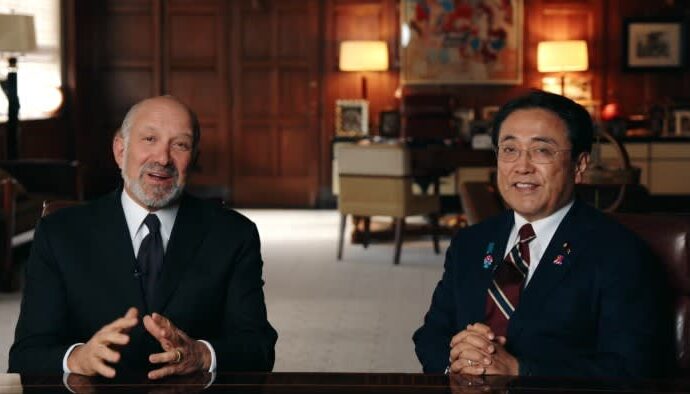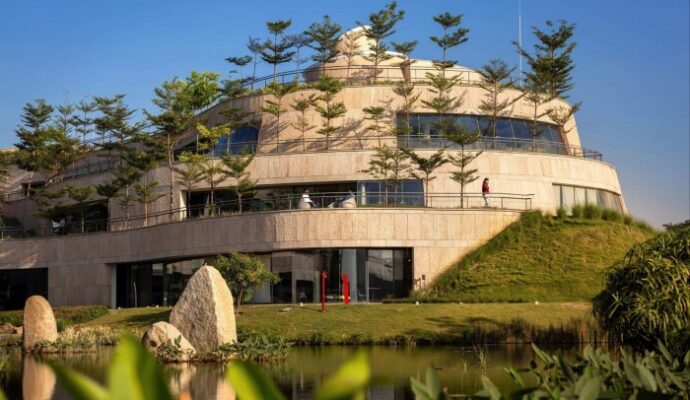China’s launch this week of a tech visa to attract technology workers has immediately sparked opposition at home, with young Chinese voicing concern over more competition in the deteriorating labour market.
Beijing hopes the “K-visa” scheme, which analysts said would appeal to overseas Chinese and skilled workers in the developing world, will support the development of its science and technology industries, a priority for President Xi Jinping amid increasing political competition with the US.
The K-visa is designed to attract “eligible young science and technology professionals”, China’s state media said. The scheme shows “a more open and confident China”, the Communist party mouthpiece, the People’s Daily, added.
“With the K-visa, I expect accelerated inflows from India, Russia, south-east Asia, and the Middle East — places brimming with Stem [science, technology, engineering and maths] talent at lower cost,” said Han Shen Lin, a professor at New York University Shanghai.
“It’ll also appeal to overseas Chinese and US and European researchers facing friction at home,” he added.
Few details are available about the scheme, which was first announced in August and rolled out on October 1, a public holiday for the country’s national day. Visa holders can be employed in fields ranging from education to science and technology, as well as entrepreneurial and business activities.
Unlike existing visas, it does not require applicants to be sponsored by an employer in China or another entity.
The launch of the initiative has come after the US last month slapped a $100,000 charge on “H-1B” visas for highly skilled workers.
“While [US President Donald] Trump is taxing the import of talent with the new $100,000 fee for an H-1B visa for skilled workers, China is going the other way,” Allan von Mehren, chief analyst and China economist at Danske Bank Markets, wrote in a note.
George Chen, partner at the Asia Group, said the scheme served Xi’s goal of strengthening China’s self-reliance in tech and innovation.
“To reach that goal, China now realises it has to open wider and . . . to make the whole process much easier and more attractive,” he said. “Hence the K-visa programme.”
But the scheme has drawn a nationalist and at times even xenophobic backlash in China, where finding even science and tech work is becoming harder for new graduates. China’s youth unemployment rate rose to nearly 19 per cent in August, a two-year high.
Some online commenters asked why a country that produces millions of Stem graduates would need a foreign talent scheme.
“If we have the resources, why don’t we nurture our own talent?” one asked.
Others said that granting visas to Indian students — who accounted for about 70 per cent of H-1B recipients — would be a betrayal of Chinese soldiers who died in border clashes with their southern neighbour five years ago.
“Every inch of this land was reclaimed from invaders with the blood and sacrifice of our ancestors,” said one comment on China’s social media platform, Xiaohongshu. “China must remain a China for Chinese people.”
The response appeared to force the government to the back foot, with state media publishing articles this week defending the scheme.
“Some have misinterpreted the policy, making outlandish claims that mislead the public and cause unnecessary anxiety,” the People’s Daily said.
“Although China leads the world in total human resources . . . it still lacks high-level talent,” it added, naming an expected skills gap in manufacturing.
Most analysts believe the policy will be aimed at bringing in workers from renowned universities or research institutions, or with exceptional skills in priority areas, such as biomedicine and artificial intelligence.
The scheme will probably target a “more reduced but very talented pool”, said Alicia García-Herrero, chief Asia-Pacific economist at Natixis.
Experts said India would be a natural beneficiary of the policy, with a strong pipeline of science and tech graduates.
“It could be attractive for mid-career Indians with families who get full facilities in China and assured projects,” said Manjeet Kripalani, executive director of Gateway House, a Mumbai-based think-tank.
While relations between Beijing and New Delhi have been frosty in recent years, the sides have pursued a recent rapprochement. Prime Minister Narendra Modi met Xi last month in China, his first such visit in seven years, when he attended the Shanghai Cooperation Organization security forum.
Direct flights between the countries, which have been suspended since the Covid-19 pandemic, are expected to resume this month.
But one executive at an Indian university who asked not to be named said they were sceptical a wave of students would be pursuing careers in China.
“You would have to learn Chinese,” the person said. “It’s not even a third or fourth language option here.”
Analysts said that attracting global talent would support China’s pursuit of tech supremacy, especially as it believed the US was trying to constrain its development of advanced industries, such as semiconductors.
China “is playing the long game on this one”, said Chris Beddor, deputy research director at Gavekal.
“They’ve been pushing for years to attract more international talent in order to become a science and technology powerhouse. They’ll almost certainly keep pushing for years to come.”


